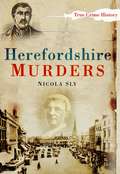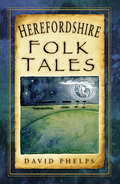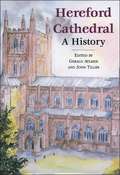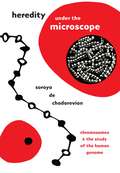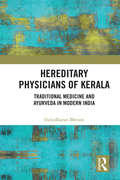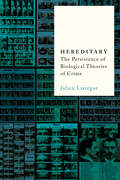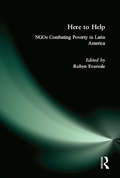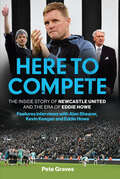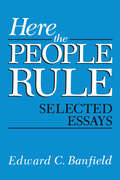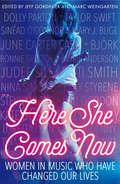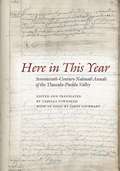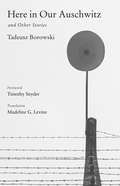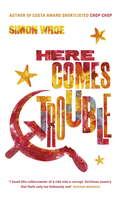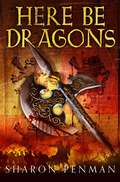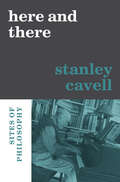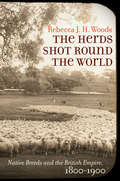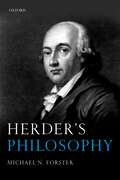- Table View
- List View
Herefordshire Murders
by Nicola SlyHerefordshire Murders brings together twenty-eight murderous tales, some which were little known outside the county and others which made national headlines. Herefordshire was home to one of Britain’s most infamous murderers, Major Herbert Rowse Armstrong, who, in 1921, poisoned his wife and attempted to poison a fellow solicitor in Hay-on-Wye. However, the county has also experienced many lesser known murders. They include the case of two-year-old Walter Frederick Steers, brutally killed in Little Hereford in 1891; eighty-seven-year-old Phillip Ballard, who died at the hands of two would-be burglars in Tupsley in 1887; Jane Haywood, murdered by her husband near Leominster in 1903; and the shooting of two sisters at Burghill Court, near Hereford, by their butler in 1926. Nicola Sly’s carefully researched and enthralling text will appeal to everyone interested in the shady side of Herefordshire’s history.
Herefordshire Folk Tales (Folk Tales Ser.)
by David PhelpsThis selection of thirty folk tales and legends from the deepest corners of Herefordshire reflect the wit and wisdom of the countryside and its people. There are strange happenings in the peaceful county, formed from early attempts to explain the natural and spiritual world, as well as dark tales of revenge resulting from clashes on the Welsh Borders. From the Saxon king of East Anglia who became the patron saint of Hereford Cathedral, and the story of the black hound of Hergest Court which inspired Arthur Conan Doyle, to a medieval love story, these gripping tales have stood the test of time, and remain classic texts which will be enjoyed time and again by modern readers.
Hereford Cathedral
by Gerarld AlymerUnique in its possession of a chained library and of the Mappa Mundi, Hereford Cathedral is remarkable for its architecture, its long history and its musical tradition. "Hereford Cathedral" is the definitive account of its history from Anglo-Saxon times to the present, and of its architecture, fittings, musical tradition, archives and library. Substantial parts of the structure date from Norman times, but the building has been modified in many ways over the years. In the middle ages Hereford was the centre of pilgrimage to the shrine of St. Thomas Cantilupe, bishop of Hereford (d.1282). It survived the Reformation relatively intact, but was damaged during the Civil War. Its west end collapsed disastrously in 1786, leading to the renewal and reworking of the exterior by James Wyatt. Little was changed in the interior until the striking Victorian rationalisation by George Gilbert Scott.
Heredity under the Microscope: Chromosomes and the Study of the Human Genome
by Soraya de ChadarevianBy focusing on chromosomes, Heredity under the Microscope offers a new history of postwar human genetics. Today chromosomes are understood as macromolecular assemblies and are analyzed with a variety of molecular techniques. Yet for much of the twentieth century, researchers studied chromosomes by looking through a microscope. Unlike any other technique, chromosome analysis offered a direct glimpse of the complete human genome, opening up seemingly endless possibilities for observation and intervention. Critics, however, countered that visual evidence was not enough and pointed to the need to understand the molecular mechanisms. Telling this history in full for the first time, Soraya de Chadarevian argues that the often bewildering variety of observations made under the microscope were central to the study of human genetics. Making space for microscope-based practices alongside molecular approaches, de Chadarevian analyzes the close connections between genetics and an array of scientific, medical, ethical, legal, and policy concerns in the atomic age. By exploring the visual evidence provided by chromosome research in the context of postwar biology and medicine, Heredity under the Microscope sheds new light on the cultural history of the human genome.
Heredity under the Microscope: Chromosomes and the Study of the Human Genome
by Soraya de ChadarevianBy focusing on chromosomes, Heredity under the Microscope offers a new history of postwar human genetics. Today chromosomes are understood as macromolecular assemblies and are analyzed with a variety of molecular techniques. Yet for much of the twentieth century, researchers studied chromosomes by looking through a microscope. Unlike any other technique, chromosome analysis offered a direct glimpse of the complete human genome, opening up seemingly endless possibilities for observation and intervention. Critics, however, countered that visual evidence was not enough and pointed to the need to understand the molecular mechanisms. Telling this history in full for the first time, Soraya de Chadarevian argues that the often bewildering variety of observations made under the microscope were central to the study of human genetics. Making space for microscope-based practices alongside molecular approaches, de Chadarevian analyzes the close connections between genetics and an array of scientific, medical, ethical, legal, and policy concerns in the atomic age. By exploring the visual evidence provided by chromosome research in the context of postwar biology and medicine, Heredity under the Microscope sheds new light on the cultural history of the human genome.
Heredity under the Microscope: Chromosomes and the Study of the Human Genome
by Soraya de ChadarevianBy focusing on chromosomes, Heredity under the Microscope offers a new history of postwar human genetics. Today chromosomes are understood as macromolecular assemblies and are analyzed with a variety of molecular techniques. Yet for much of the twentieth century, researchers studied chromosomes by looking through a microscope. Unlike any other technique, chromosome analysis offered a direct glimpse of the complete human genome, opening up seemingly endless possibilities for observation and intervention. Critics, however, countered that visual evidence was not enough and pointed to the need to understand the molecular mechanisms. Telling this history in full for the first time, Soraya de Chadarevian argues that the often bewildering variety of observations made under the microscope were central to the study of human genetics. Making space for microscope-based practices alongside molecular approaches, de Chadarevian analyzes the close connections between genetics and an array of scientific, medical, ethical, legal, and policy concerns in the atomic age. By exploring the visual evidence provided by chromosome research in the context of postwar biology and medicine, Heredity under the Microscope sheds new light on the cultural history of the human genome.
Heredity under the Microscope: Chromosomes and the Study of the Human Genome
by Soraya de ChadarevianBy focusing on chromosomes, Heredity under the Microscope offers a new history of postwar human genetics. Today chromosomes are understood as macromolecular assemblies and are analyzed with a variety of molecular techniques. Yet for much of the twentieth century, researchers studied chromosomes by looking through a microscope. Unlike any other technique, chromosome analysis offered a direct glimpse of the complete human genome, opening up seemingly endless possibilities for observation and intervention. Critics, however, countered that visual evidence was not enough and pointed to the need to understand the molecular mechanisms. Telling this history in full for the first time, Soraya de Chadarevian argues that the often bewildering variety of observations made under the microscope were central to the study of human genetics. Making space for microscope-based practices alongside molecular approaches, de Chadarevian analyzes the close connections between genetics and an array of scientific, medical, ethical, legal, and policy concerns in the atomic age. By exploring the visual evidence provided by chromosome research in the context of postwar biology and medicine, Heredity under the Microscope sheds new light on the cultural history of the human genome.
Heredity under the Microscope: Chromosomes and the Study of the Human Genome
by Soraya de ChadarevianBy focusing on chromosomes, Heredity under the Microscope offers a new history of postwar human genetics. Today chromosomes are understood as macromolecular assemblies and are analyzed with a variety of molecular techniques. Yet for much of the twentieth century, researchers studied chromosomes by looking through a microscope. Unlike any other technique, chromosome analysis offered a direct glimpse of the complete human genome, opening up seemingly endless possibilities for observation and intervention. Critics, however, countered that visual evidence was not enough and pointed to the need to understand the molecular mechanisms. Telling this history in full for the first time, Soraya de Chadarevian argues that the often bewildering variety of observations made under the microscope were central to the study of human genetics. Making space for microscope-based practices alongside molecular approaches, de Chadarevian analyzes the close connections between genetics and an array of scientific, medical, ethical, legal, and policy concerns in the atomic age. By exploring the visual evidence provided by chromosome research in the context of postwar biology and medicine, Heredity under the Microscope sheds new light on the cultural history of the human genome.
Heredity under the Microscope: Chromosomes and the Study of the Human Genome
by Soraya de ChadarevianBy focusing on chromosomes, Heredity under the Microscope offers a new history of postwar human genetics. Today chromosomes are understood as macromolecular assemblies and are analyzed with a variety of molecular techniques. Yet for much of the twentieth century, researchers studied chromosomes by looking through a microscope. Unlike any other technique, chromosome analysis offered a direct glimpse of the complete human genome, opening up seemingly endless possibilities for observation and intervention. Critics, however, countered that visual evidence was not enough and pointed to the need to understand the molecular mechanisms. Telling this history in full for the first time, Soraya de Chadarevian argues that the often bewildering variety of observations made under the microscope were central to the study of human genetics. Making space for microscope-based practices alongside molecular approaches, de Chadarevian analyzes the close connections between genetics and an array of scientific, medical, ethical, legal, and policy concerns in the atomic age. By exploring the visual evidence provided by chromosome research in the context of postwar biology and medicine, Heredity under the Microscope sheds new light on the cultural history of the human genome.
Hereditary Physicians of Kerala: Traditional Medicine and Ayurveda in Modern India
by Indudharan MenonThis book examines the history and evolution of Ayurveda and other indigenous medical traditions in juxtaposition with their encounter with colonial modernity. Through the lens of hereditary folk and Ayurvedic practitioners, it focuses on Kerala’s heterogeneous medical traditions and presents them against the backdrop of the geographical, historical, sociocultural, ethnographic and regional contexts in which they developed and transformed. The author explores the world of Kerala’s last traditionally trained hereditary practitioners (folk healers, poison therapists, Sanskrit-speaking Muslim Ayurvedic practitioners and the legendary Brahman Ashtavaidyan physicians). He discusses the views of these physicians regarding the marked difference between their personalised ancestral methods of treatment and the standardised version of Ayurveda compliant with biomedicine that is practised by doctors today. Drawing on extensive fieldwork, this book will be useful to researchers and scholars of medical anthropology, health and social medicine, sociology and social anthropology, the history of science and modern Indian history, as well as to medical practitioners interested in alternative and traditional medicine.
Hereditary Physicians of Kerala: Traditional Medicine and Ayurveda in Modern India
by Indudharan MenonThis book examines the history and evolution of Ayurveda and other indigenous medical traditions in juxtaposition with their encounter with colonial modernity. Through the lens of hereditary folk and Ayurvedic practitioners, it focuses on Kerala’s heterogeneous medical traditions and presents them against the backdrop of the geographical, historical, sociocultural, ethnographic and regional contexts in which they developed and transformed. The author explores the world of Kerala’s last traditionally trained hereditary practitioners (folk healers, poison therapists, Sanskrit-speaking Muslim Ayurvedic practitioners and the legendary Brahman Ashtavaidyan physicians). He discusses the views of these physicians regarding the marked difference between their personalised ancestral methods of treatment and the standardised version of Ayurveda compliant with biomedicine that is practised by doctors today. Drawing on extensive fieldwork, this book will be useful to researchers and scholars of medical anthropology, health and social medicine, sociology and social anthropology, the history of science and modern Indian history, as well as to medical practitioners interested in alternative and traditional medicine.
Hereditary: The Persistence of Biological Theories of Crime
by Julien LarregueSince the 1990s, a growing number of criminal courts around the world have been using expert assessments based on behavioral genetics and neuroscience to evaluate the responsibility and dangerousness of offenders. Despite this rapid circulation, however, we still know very little about the scientific knowledge underlying these expert evaluations. Hereditary traces the historical development of biosocial criminology in the United States from the 1960s to the present, showing how the fate of this movement is intimately linked to that of the field of criminology as a whole. In claiming to identify the biological and environmental causes of so-called "antisocial" behaviors, biosocial criminologists are redefining the boundary between the normal and the pathological. Julien Larregue examines what is at stake in the development of biosocial criminology. Beyond the origins of delinquency, Larregue addresses the reconfiguration of expertise in contemporary societies, and in particular the territorial struggles between the medical and legal professions. For if the causes of crime are both biological and social, its treatment may call for medical as well as legal solutions.
Hereditary: The Persistence of Biological Theories of Crime
by Julien LarregueSince the 1990s, a growing number of criminal courts around the world have been using expert assessments based on behavioral genetics and neuroscience to evaluate the responsibility and dangerousness of offenders. Despite this rapid circulation, however, we still know very little about the scientific knowledge underlying these expert evaluations. Hereditary traces the historical development of biosocial criminology in the United States from the 1960s to the present, showing how the fate of this movement is intimately linked to that of the field of criminology as a whole. In claiming to identify the biological and environmental causes of so-called "antisocial" behaviors, biosocial criminologists are redefining the boundary between the normal and the pathological. Julien Larregue examines what is at stake in the development of biosocial criminology. Beyond the origins of delinquency, Larregue addresses the reconfiguration of expertise in contemporary societies, and in particular the territorial struggles between the medical and legal professions. For if the causes of crime are both biological and social, its treatment may call for medical as well as legal solutions.
Here to Help: NGOs Combating Poverty in Latin America
by Robyn EversoleOver six billion dollars in developmental assistance is funneled annually through non-governmental organizations (NGOs), yet little is understood about the nature of their relationship with communities and the real impact of their work. This book examines what role NGOs really play in fighting poverty in Latin America. Expert NGO professionals and scholars explore grass-roots relationships between international religious and secular NGOs and poor communities. They probe the power structures, cultural assumptions, dangers and possibilities that underlie NGOs' work. While fighting poverty is the mission of many NGOs, most are aware that they often fail to make things better, and, in fact, may make things worse. By providing a forum for Northern and Southern NGOs, donors, scholars, and poor people themselves, this book explores the causes and cures of poverty, and presses at the boundaries of our understanding of participatory development. It identifies both internal and external factors that influence the success of NGO projects, and moves beyond standard best-practice theory to probe more deeply the relationships that underlie poverty and how these relationships can be shifted to achieve solutions.
Here to Help: NGOs Combating Poverty in Latin America
by Robyn EversoleOver six billion dollars in developmental assistance is funneled annually through non-governmental organizations (NGOs), yet little is understood about the nature of their relationship with communities and the real impact of their work. This book examines what role NGOs really play in fighting poverty in Latin America. Expert NGO professionals and scholars explore grass-roots relationships between international religious and secular NGOs and poor communities. They probe the power structures, cultural assumptions, dangers and possibilities that underlie NGOs' work. While fighting poverty is the mission of many NGOs, most are aware that they often fail to make things better, and, in fact, may make things worse. By providing a forum for Northern and Southern NGOs, donors, scholars, and poor people themselves, this book explores the causes and cures of poverty, and presses at the boundaries of our understanding of participatory development. It identifies both internal and external factors that influence the success of NGO projects, and moves beyond standard best-practice theory to probe more deeply the relationships that underlie poverty and how these relationships can be shifted to achieve solutions.
Here to Compete: The Inside Story of Newcastle United and the Era of Eddie Howe
by Pete GravesThe quintessential book for Newcastle United fans everywhere, Sky Sports presenter Pete Graves tells the inside story of the Magpies today, using exclusive interviews with Eddie Howe and other club legends.Welcome to Newcastle United, the most exciting football club in the world right now.Since joining the team in 2021, Eddie Howe has been determined to transform Newcastle United from a perennial underachiever into one of the biggest teams in not just the Premier League, but Europe as well. With the players, fans and decision-makers finally all working together, and with the pain of the past behind them, the Magpies are ready for a new era to begin...Telling the story of Newcastle through some of its most competitive moments, including Kevin Keegan and Bobby Robson's stewardships, as well as touching on some of its trickier times, television presenter and diehard fan Pete Graves recaps the team's history and goes inside the club to show what is so exciting about this team today.Featuring interviews with key figures past and present, including Eddie Howe himself, Graves builds a picture of what's happening with Newcastle, both on and off the pitch, as they climb the league and set their sights on silverware.With extensive research and unparalleled access, Here to Compete is the incredible story of a team reborn and the man who is on course to build an empire.
Here the People Rule: Selected Essays (Boston Studies in the Philosophy and History of Science)
by Edward BanfieldMost of the essays in this volume have appeared in scholarly journals or in books edited by others. A few are published here for the first time. None has been taken from one of my books. A would-be reader would have to go to much trouble to find them; that is the reason for bringing them together. Collections of essays are frequently miscellanies. This one is not. Except for the final two chapters, all deal with some aspect of the American political system. Some have to do with the structure and functioning of the federal system, others with the nature of publi(}-and incidentally other-organization, and still others with the causes and supposed cures of the social problems that government is nowadays expected to solve or cope with. The two final chapters are about the relationship between economics and political science; for lack of a better term they may be methodological.
Here She Comes Now: Women in Music Who Have Changed Our Lives
by Jeff Gordinier Marc WeingartenHere She Comes Now brings together some of America’s best music writers – such as Susan Choi, recipient of the inaugural PEN / W.G. Sebald award, Daniel Walters, whose credits include the screenplay for Heathers, and Alina Simon, whose novel Note to Self was described as ‘hilarious’ by Amanda Palmer - to explore incredible women in popular music. Often wryly amusing – even occasionally heart-rending – and covering artists from Dolly Parton and Nina Simone to Bjork, Taylor Swift and Riot Grrrl pioneer Kathleen Hanna, this is a feisty celebration of the transformative power of musicians who have truly rocked our world. The full list of artists covered is: Dolly Parton, Taylor Swift, Sinéad O’Connor, Mary J. Blige, June Carter Cash, Björk, Ronnie Spector, Laurie Anderson, Judee Sill, Patti Smith, Nina Simone, Poly Styrene, Stevie Nicks, Kim Gordon, Kate Bush, P.J. Harvey, Loretta Lynn, Sandy Denny, Tina Turner, Kathleen Hanna, Liz Phair, Madonna and Miley Cyrus.
Here in This Year: Seventeenth-Century Nahuatl Annals of the Tlaxcala-Puebla Valley
by Camilla TownsendIndigenous breadsellers riot over a Spanish monopoly scheme; Spanish authorities plan to remove native people from the city; indigenous people struggle to construct a splendid church; the city's inhabitants fight over elections and witness hangings, epidemics, and eclipses. All this and more a Native American writer of Puebla, Mexico, reported in the late seventeenth century in a set of annals in his own language, Nahuatl, telling his people's local history from the coming of the Christian faith down to his own day. These records were part of a corpus of such annals produced in the Tlaxcala-Puebla region during this period. These writings by native peoples for their own posterity provide the most direct access to the indigenous perspective on the postconquest centuries that we are ever going to find. Here in This Year for the first time brings two sets of Nahuatl annals—the other one being from a more provincial locale—to the English-speaking world, presenting the original Nahuatl with facing, very readable translations.
Here Comes Trouble: Shortlisted for the Bollinger Everyman Wodehouse Prize for Comic Fiction
by Simon WroeWelcome to Kyrzbekistan, winner of Most Corrupt Country 2011 and 2012. A place where anyone can be happy - as long they aren't poor, ill, foreign, a pedestrian, or in any way interested in the truth. A country that takes fake news and false promises to new levels. Expelled from school, Ellis Dau has been forced to help his father out at the Chronicle, the last bastion of free speech in this strange world. But when the country's power supply fails and dark voices threaten the Chronicle's future, Ellis finds himself in an unlikely fight for freedom.'I loved this rollercoaster of a ride into a corrupt, fictitious country that feels only too hideously real' Deborah Moggach, author of The Best Exotic Marigold Hotel
Here Be Dragons: A Novel (Welsh Princes Trilogy #1)
by Sharon PenmanSharon Penman's Here Be Dragons is an absorbing historical novel of power and betrayal, loyalty and political intrigue in thirteenth-century England, Wales and France.Thirteenth-century Wales is a divided country, ever at the mercy of England's ruthless, power-hungry King John. Llewelyn, Prince of North Wales, secures an uneasy truce by marrying the English king's beloved illegitimate daughter, Joanna, who slowly grows to love her charismatic and courageous husband. But as John's attentions turn again and again to subduing Wales – and Llewelyn – Joanna must decide where her love and loyalties truly lie.The turbulent clashes of two disparate worlds and the destinies of the individuals caught between them spring to life in this magnificent novel of power and passion, loyalty and lies. The book that began the trilogy that includes Falls the Shadow and The Reckoning, Here Be Dragons brings thirteenth-century England, France, and Wales to tangled, tempestuous life.
Here and There: Sites of Philosophy
by Stanley CavellThe first posthumous collection from the writings of Stanley Cavell, shedding new light on the distinctive vision and intellectual trajectory of an influential American philosopher. For Stanley Cavell, philosophy was a matter of responding to the voices of others. Throughout his career, he articulated the belief that words spring to life in concrete circumstances of speech: the significance and power of language depend on the occasions that elicit it. When Cavell died in 2018, he left behind some of his own most powerful language—a plan for a book collecting numerous unpublished essays and lectures, as well as papers printed in niche journals. Here and There presents this manuscript, with thematically relevant additions, for the first time. These writings, composed between the 1980s and the 2000s, reflect Cavell’s expansive interests and distinctive philosophical method. The collection traverses all the major themes of his immense body of work: modernity, psychoanalysis, the human voice, moral perfectionism, tragedy, skepticism. Cavell’s rich and cohesive philosophical vision unites his wide-ranging engagement with poets, critics, psychoanalysts, social scientists, and fellow philosophers. In Here and There, readers will find dialogues with Shakespeare, Thoreau, Wittgenstein, Freud, Heidegger, Walter Benjamin, Wallace Stevens, Veena Das, and Peter Kivy, among others. One of the collection’s most striking features is an ensemble of five pieces on music, constituting Cavell’s first discussion of the subject since the mid-1960s. Edited by philosophers who have been invested in Cavell’s work for decades, Here and There not only gathers the strands of a writing life but also maps its author’s intellectual journeys. In these works, Cavell models what it looks like to examine seriously one’s own passions and to forge new communities through unexpected conversations.
The Herds Shot Round the World: Native Breeds and the British Empire, 1800–1900 (Flows, Migrations, and Exchanges)
by Rebecca J. WoodsAs Britain industrialized in the early nineteenth century, animal breeders faced the need to convert livestock into products while maintaining the distinctive character of their breeds. Thus they transformed cattle and sheep adapted to regional environments into bulky, quick-fattening beasts. Exploring the environmental and economic ramifications of imperial expansion on colonial environments and production practices, Rebecca J. H. Woods traces how global physiological and ecological diversity eroded under the technological, economic, and cultural system that grew up around the production of livestock by the British Empire. Attending to the relationship between type and place and what it means to call a particular breed of livestock "native," Woods highlights the inherent tension between consumer expectations in the metropole and the ecological reality at the periphery.Based on extensive archival work in the United Kingdom, New Zealand, and Australia, this study illuminates the connections between the biological consequences and the politics of imperialism. In tracing both the national origins and imperial expansion of British breeds, Woods uncovers the processes that laid the foundation for our livestock industry today.
Herder's Philosophy
by Michael N. ForsterJohann Gottfried Herder (1744-1803) is a towering figure in modern thought, but one who has hitherto been severely underappreciated. Michael Forster seeks to rectify that situation He considers Herder's philosophy in the round and argues that it is both far more impressive in quality and far more influential in modern thought than has previously been realized. After an introduction on Herder's intellectual biography, philosophical style, and general program in philosophy, there are chapters on his philosophy of language, his hermeneutics, his theory of translation, his contribution of the philosophical foundations for both linguistics and cultural anthropology, his philosophy of mind, his aesthetics, his moral philosophy, his philosophy of history, his political philosophy, his philosophy of religion, and his intellectual influence. Forster argues that Herder contributed vitally important ideas in all of these areas; that in many of them his ideas were seminal for major subsequent philosophers, including Friedrich Schlegel, Schleiermacher, Wilhelm von Humboldt, Hegel, and Nietzsche; that they indeed founded whole new disciplines, such as linguistics, anthropology, and comparative literature; and that moreover they were in many cases even better than what these subsequent thinkers and disciplines went on to make of them.
